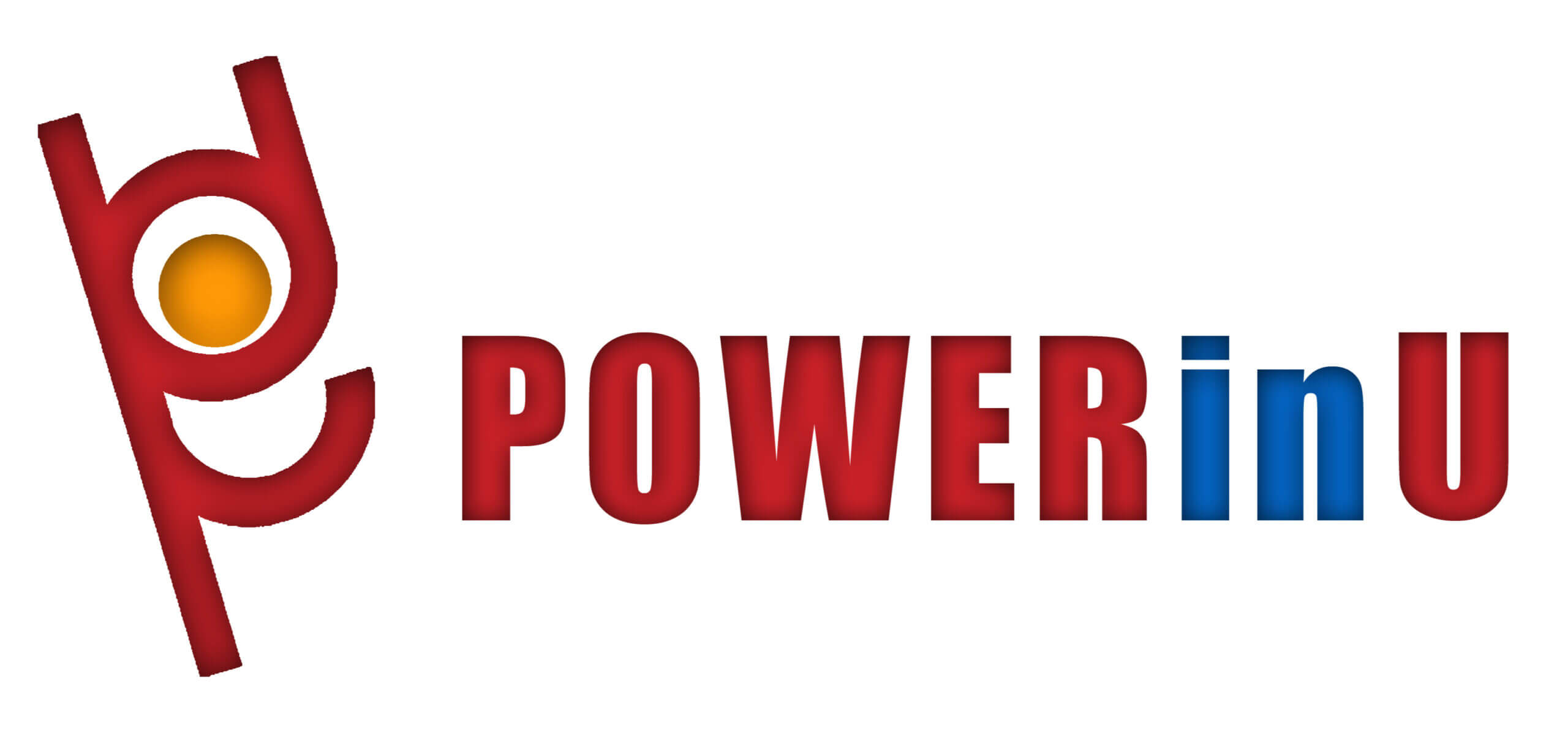by Jun Marfori and Elaine Cercado
This presentation was delivered by POWERinU Director Jun Marfori during the 677th General Membership Meeting of People Management Association of the Philippines (PMAP).
Many years ago, fresh from University, and in what was possibly my first town hall meeting, I heard the GM say “This is a company where our best assets go down the elevator at the end of the day.”
Fortunately, some things just don’t change. More than 4 decades since then, I genuinely believe the statement as Gospel truth. I am certain it will always ring true.
Amidst unabated rapid change and disruption, in recent years, at present, and decades to come, we cannot deny that behind, at the forefront, center, and hence driving these changes, are people, their imagination and inventiveness, agility, resilience, their moral compass and values, their core – including their knowledge, skills and behaviors. History has taught us, upheavals, tech revolutions, and other high impact events shake us into uncertainty and chaos at the moment, but subsequently and over time, often become merely timeline points in history. And people will always be a key element and essential integral part of the equation.
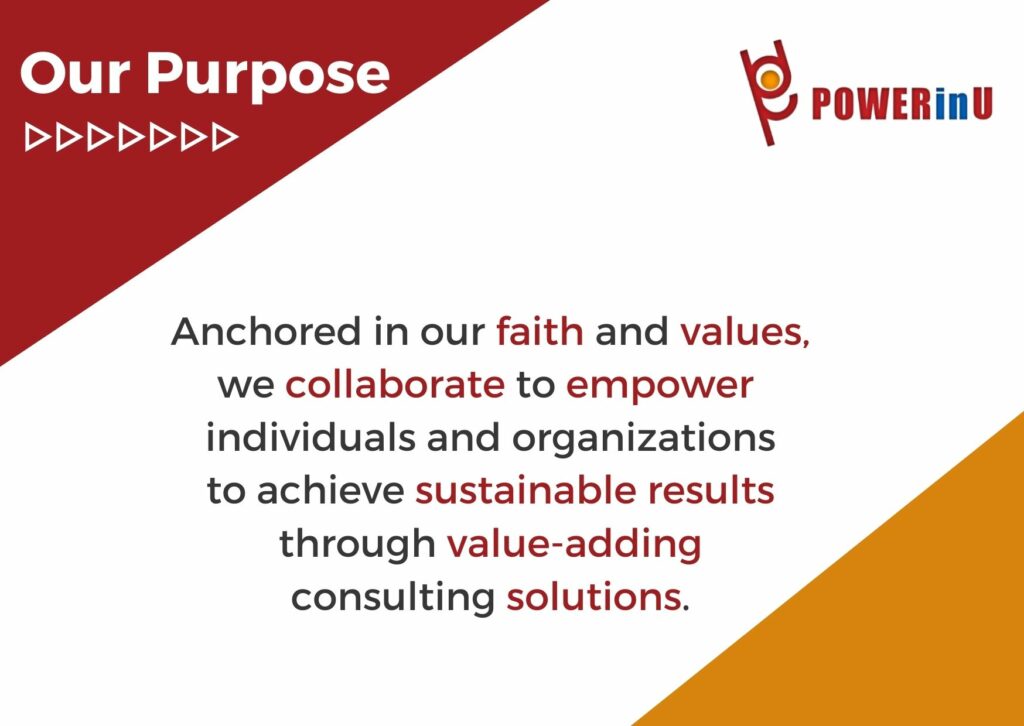
Which is why we in POWERinU are honored and privileged to share today, how our mission and principles have resulted in years of successful collaboration, partnership and Win Win benefits with entities and individuals we have worked with, who have trusted in our integrity, ability, experience, and values. Not exclusively because of the over 200 years of combined experience we possess and can bring into our Value-adding consulting solutions, but because we are driven primarily to start our engagements with such questions as:
What is it that you desire to achieve?
Where are you today and where do you desire to be next and by when?
What keeps you awake at night?
After asking these questions, then a meaningful conversation begins. As cliché sounding as the statement may sound, typically “that is the beginning of a beautiful friendship.”
I will quickly illustrate through how we took these steps hand in hand with a key client, who narrated to us, their goal and aspiration to transition, transform from product sales and into an ICT solutions provider, and recognizing that the first step was to empower and upskill key individuals.
I will provide a quick context to the framework and solution that jointly we undertook here.
This is the story of a Sales Organizational Transformation of Eastern Communications.
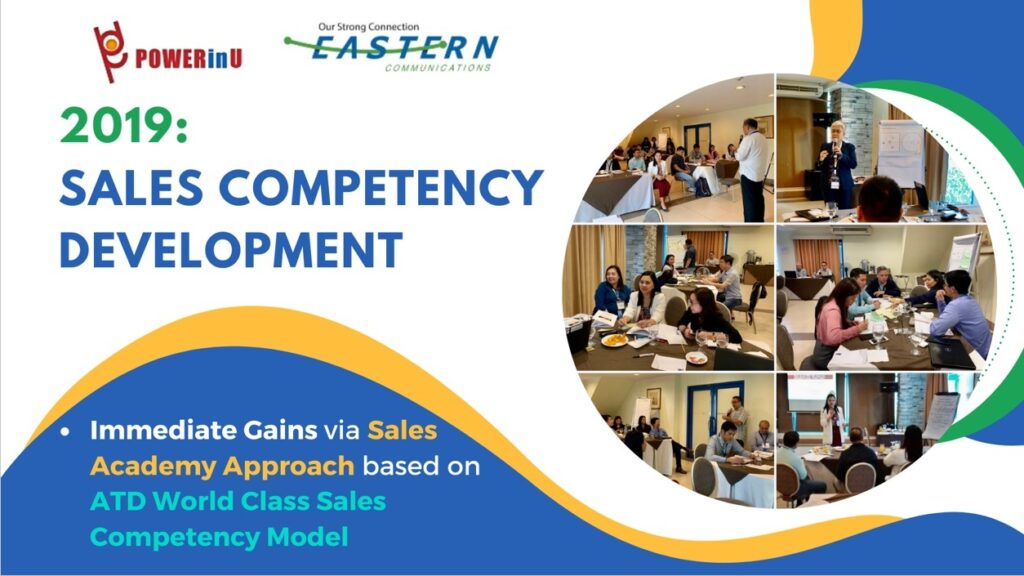
In 2019 and into early 2020, we embarked on this shared journey, chose the Critical Sales Competency model of the Association of Talent Development, or formerly the ASTD. Because the model reflects the trends that are shaping the sales profession, encompass current and emerging sales practices, we deemed this be relevant across various functions; especially as it also included the perspectives of sales professionals and employers. Here you can see that aside from the Foundational competencies that apply to all functions, there are specific competencies for the sales frontliners, the Sales Leadership and Sales enablement functions.
Actionable, easy to navigate, and accurate, it could be used for a variety of sales talent management efforts, such as recruitment, selection, assessment, and development.
Immediate Gains – it provided the participants with practical skills, processes and tools that can be applied immediately – and to deliver predictable, repeatable and measurable results
Standardized and Sustainable, and based on “building block” model, it can be adapted to and grows with the sales roles and responsibilities
We adopted the BEST, or BUILDING EXCELLENT SALES TEAMS program, based on the ATD Critical Competency Model for Sales people, and leveraged on the different skill sets that are considered key to all, the Sales Force, the Sales Leaders and the Sales Enablement or Support Functions.
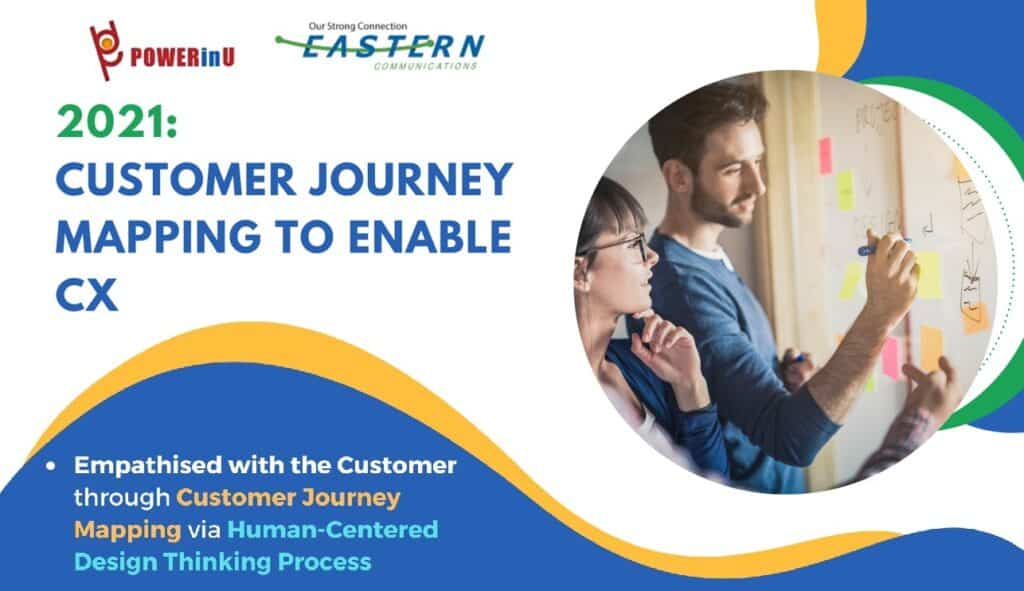
In 2021, we forged ahead still, through customer Journey Mapping. Why go through Customer Journey Mapping – which is about empathizing with the Customer through the Human-Centered design thinking.
To design something, involves both the process and the result. Hence, we can also say the quality of design process is directly related to the quality of design outcome. And so if business and sales transformation are the desired outcome, then we need to ensure we achieve good quality of processes.
What are these processes that may impact the desired transformation outcome?
- The Customer experience – from awareness of a need, to understanding options, to evaluation and making a decision.
- Sales competency-based People / HR processes – from recruitment/selection, to onboarding, to performance goal-setting & assessment, to learning and development, to career development and growth, and to talent development for succession.
- With these interconnected People processes, we impact employee experience. For instance, alignment, motivation, engagement and culture, recognition and growth.
We used Human centered design thinking, particularly the customer journey mapping, to facilitate and help achieve the quality of both process and outcome or transformation desired.
The process became a validation of how effective the BEST consultative selling competencies have been applied and demonstrated to the key customers in the 4 segments of ETPI.
It also became a process to research and understand first-hand any changes and impacts the recent pandemic, economic, technology and other business and market factors, had on the customers. It was all about listening, focusing and empathizing with the customers.
From the immediate skills applications from the Sales Academy, and the insights gained from the Customer Journey Mapping, it was time to move to:
- Aligning key sales roles to the Sales Competencies defined in the World Class Sales Competency framework, and
- Building up a sustainable learning and development roadmap for key sales roles to ensure a wholistic and sustainable Sales transformation
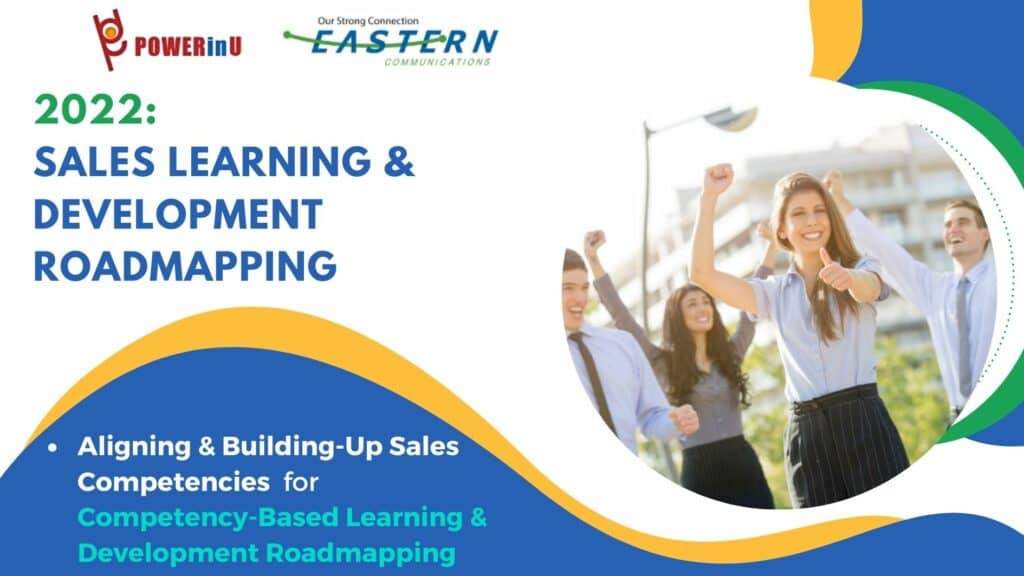
This 2022, we started phase 2, which is about effectively transitioning from current to desired sales competencies through:
- Sales learning journey mapping – which looks at the “day in the life of…” Sales leaders and account managers
- Strategic L&D planning, road mapping and change implementation with emphasis on embedment of the Sales competencies into the various organizational processes and tools
- Documentation and train-the-trainer of key personnel and leaders to ensure deep, wide and sustainable transformation
In a graphical illustration, and in summary, this is what the learning roadmap might look like.
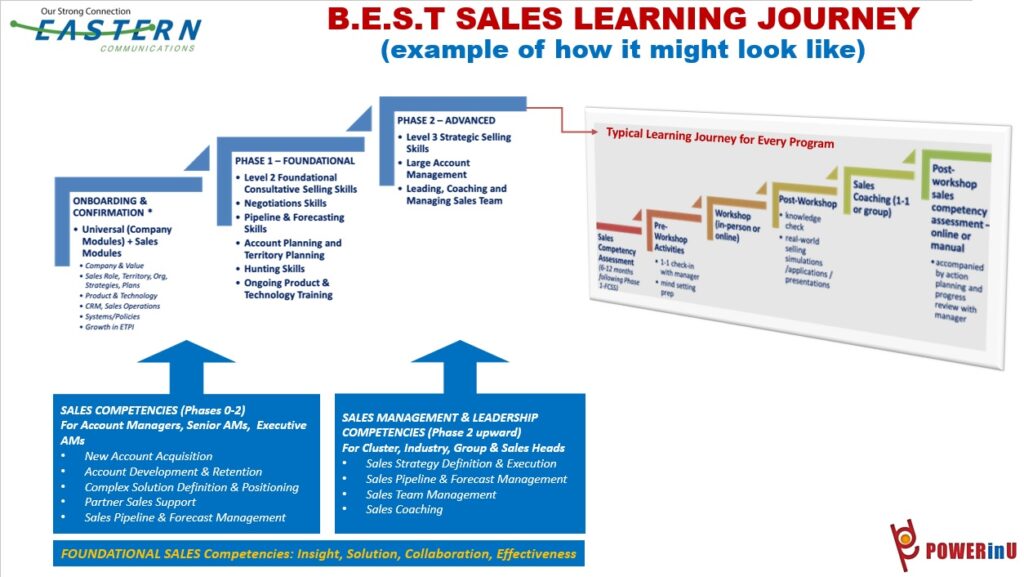
Using the Critical Competencies for key Sales team members, and embedding these in the Sales Transformation training workshop, we can map a journey that is wholistic and comprehensive, end-to-end, and practicable and can be immediately executed for short- and long-term gains. We begin with people, and the transformation journey progresses, driven by these same individuals and teams.
Watch this video of an individual, who represents an established, progressive and fast-growing transformed company, Eastern Communications. Mike Castaneda, Head of Sales, expresses how their goal of transformation started with empowering the sales team members, and into what has been so far an ongoing and forward journey. And the rest as they say is history.
This can be a fruitful journey too for you, if this is something that is of curiosity and interest to you. We are most happy to have a conversation.
Watch the testimonial from Mr. Mike Castaneda of Eastern Communications.
This can be a fruitful journey too for you, if this is something that is of curiosity and interest to you. We are most happy to have a conversation. Just email us at [email protected].
